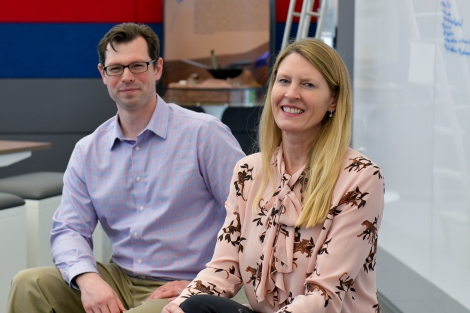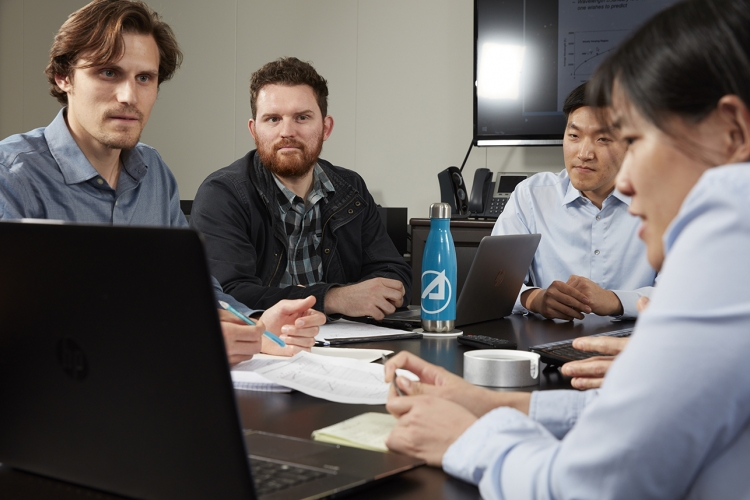The sabbatical program, started in April 2017, gives Aerospace staff the opportunity to spend 40 hours dedicated to solving a specific problem.
Paul Skinner and Idellyse Martinez-quiles spent their week simulating the change in antenna gain patterns with a magnetized plasma in the vicinity of the antenna.
Kathy Hospodar and Preston Partridge teamed up to research the current and developing technology of small commercial flat-panel phased arrays for mobile communications to assess their capability to acquire, track, and communicate with satellites.
Sabbatical Program Fun Facts:
• 234 people have participated in the sabbatical program (several more than once).
• Staff from all Engineering and Technology Group organizations have participated in the sabbatical program.
• Staff from Albuquerque, Chantilly, Colorado Springs, Crystal City, Cape Canaveral, El Segundo, Houston, and Pasadena have participated in the sabbatical program.
• Many sabbaticals have resulted in the participants receiving ATIP/iLab funding, direct customer funding, and patent applications.

Skinner commented on the benefit of being able to spend a straight 40 hours on one project. “Because this was a difficult problem, it required intense concentration, without the typical daily distractions of phone calls and emails that often demand immediate responses,” he said. “And much more can be accomplished with consecutive hours, rather than the inefficiency of starting and stopping as you mix in work from other projects.”
All agreed that they would recommend the sabbatical program. Noted Hospodar: “It is not enough time to fully solve a problem, but it will produce a more focused set of next steps to be taken.” Partridge said the program is “particularly useful for technical topics that need a little boost to grow into something more.”
Dr. Lael Woods, who oversees the sabbatical program for iLab, explained that “we designed the sabbatical program to be a safe place for staff to test their ideas with a relatively low level of investment by the company.”

